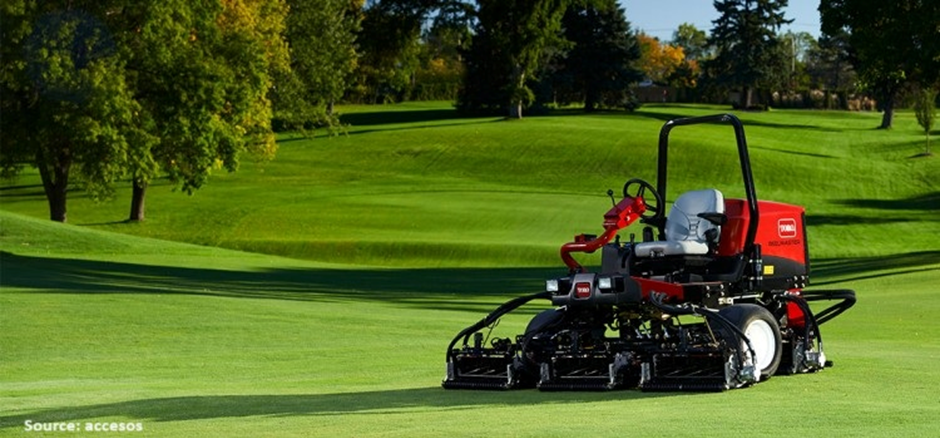
Mechanical Ventilators Market by Mobility (Critical Care Mechanical Ventilatorss and Transport & Portable Mechanical Ventilatorss), by Type (Adult/pediatric Ventilatorss and Neonatal/infant Ventilatorss), by Component (Devices and Services), by Age Group (Pediatric & Neonatal, Adult, and Geriatric), by Mode (Combined-Mode Ventilation, Volume- Mode Ventilation, Pressure-Mode Ventilation, and Other Ventilation Modes), by Interface (Invasive Ventilation and Non-Invasive Ventilation), by Application (Resuscitation, Homecare Applications, Emergency/Transport, Sleep Apnea Therapy, Anaesthesiology, Clinical Applications and Others), and by End User (Hospitals, Ambulatory Surgical Centers, Home care settings, and Specialty Clinics) – Global Opportunity Analysis and Industry Forecast-2024-2030
Market Definition
The Mechanical Ventilators Market size was valued at USD 4.03 billion in 2023 and is predicted to reach USD 8.31 billion by 2030 with a CAGR of 11.0% from 2024-2030. A mechanical Ventilators is a machine that is designed to mechanically move breathable air into the lungs to provide the mechanism of breathing. A mechanical Ventilators can maintain the required levels of oxygen and carbon dioxide in a patient who is not able to breath sufficiently. A patient is ventilated with the help of an endotracheal (ET) tube, which is connected to the Ventilators and that is inserted into human’s windpipe through nose or mouth. Mechanical ventilation does not cure a disease solitarily, it only serves as a breathing assistant and used for breathing support in patients with lung diseases and lung injury.
Market Dynamics and Trends
The substantial prevalence of asthma and chronic obstructive pulmonary disease (COPD) stands as a significant catalyst propelling growth within the mechanical Ventilators market. These conditions represent the most prevalent respiratory disorders globally. In March 2023, the World Health Organization (WHO) released a report indicating that COPD ranked as the third highest cause of mortality worldwide, claiming 3.23 million lives in 2019. This data underscores the critical role of mechanical Ventilators in addressing the escalating demands of managing respiratory illnesses, thereby shaping the trajectory of the Ventilators market.
Moreover, the escalating prevalence of respiratory diseases due to factors such as heightened tobacco usage, escalating exposure to radon, asbestos, and other air pollutants is consistently amplifying the number of patients requiring acute or chronic respiratory support. Consequently, this trend is projected to spur the growth of the mechanical Ventilators market. Notably, WHO reports that tobacco-related complications claim over 8 million lives annually, with approximately 1.3 million non-smokers succumbing to second-hand smoke exposure.
However, risks associated with the use of mechanical Ventilators such as infection, tension pneumothorax or lung damage caused by over inflation are the factors restraining the global mechanical Ventilators market. On the contrary, the integration of Artificial Intelligence (AI) and Machine Learning presents a significant future opportunity in the mechanical Ventilators market. By incorporating these cutting-edge technologies, Ventilators can vastly improve their performance and capabilities. AI algorithms have the potential to analyze vast amounts of patient data, enabling the prediction of patient deterioration, fine-tuning of Ventilators settings for optimal support, and the development of personalized treatment strategies tailored to individual patient characteristics. This advancement not only enhances the efficiency and effectiveness of respiratory care but also holds promise for improving patient outcomes and reducing healthcare costs in the long term.
Market Segmentations and Scope of the Study
The mechanical Ventilators Market is segmented on the basis of mobility, type, component, age group, mode, interface, application, end user, and geography. On the basis of mobility, the market is categorized into critical care mechanical Ventilators and transport & portable mechanical Ventilators. On the basis of type, the market is divided into adult/pediatric Ventilators and neonatal/infant Ventilators. On the basis of component, the market is classified into devices and services. On the basis of age group, the market is categorized into pediatric & neonatal, adult, and geriatric. On the basis of mode, the market is classified into combined-mode ventilation, volume-mode ventilation, pressure-mode ventilation and other ventilation modes. On the basis of interface, the market is segmented into invasive ventilation and non-invasive ventilation. On the basis of application, the market is classified into resuscitation, homecare applications, emergency/transport, sleep apnea therapy, anaesthesiology, clinical applications, and others. On the basis of end user, the market is divided into hospitals, ambulatory surgical centers, home care settings, and specialty clinics. Geographic breakdown and analysis of each of the aforesaid segments includes regions comprising of North America, Europe, Asia-Pacific, and RoW.
Geographical Analysis
North America dominates the global mechanical Ventilators market, and is expected to continue its dominance during the forecast period. This is attributed to factors, such as the escalating prevalence of respiratory diseases such as chronic bronchitis, emphysema, and asthma within the region. As highlighted by the American College of Allergy, Asthma & Immunology, asthma, characterized by chronic inflammation of the lung airways resulting in symptoms including coughing, chest tightness, wheezing, or shortness of breath, affects a considerable portion of the population.
Approximately 7.7% of Americans, translating to around 24.9 million individuals, suffered with asthma, among whom 20.2 million are adults and 4.6 million are children. This substantial prevalence underscores the critical need for advanced respiratory care solutions, thereby driving the demand for mechanical Ventilators in North America.
Also, the presence of prominent companies such as Teleflex Incorporated, GE Healthcare and others signifies the competitive landscape within the medical device industry, particularly in the field of respiratory care. These companies are recognized leaders in innovation and technology, contributing to the advancement of mechanical Ventilators and other critical medical equipment. Their involvement underscores the significance of their contributions and expertise in shaping the future of respiratory therapy and patient care in the region.
On the other hand, Asia-Pacific is expected to show a steady rise in the market owing to presence of elderly population. As countries in Asia Pacific undergo demographic shifts, there is a notable rise in the proportion of elderly individuals within the population. This demographic trend is attributed to factors such as improved healthcare infrastructure, advancements in medical treatments, and enhanced life expectancy.
Elderly individuals face higher risks of respiratory conditions and chronic diseases that necessitate the use of mechanical Ventilators for respiratory support. Conditions such as chronic obstructive pulmonary disease (COPD), pneumonia, and respiratory failure are more prevalent among the elderly population.
According to the National Library of Medicine, the proportion of individuals aged 60 years and above in China is projected to rise from 12.4% (168 million) to 28% (402 million) by 2040. As a result, there is an increasing demand for respiratory care equipment, including mechanical Ventilators, to address the healthcare needs of this demographic segment.
Moreover, the escalating consumption of tobacco in the Asia Pacific (APAC) region contributes to the increasing prevalence of respiratory illnesses. Tobacco use is a significant risk factor for respiratory conditions such as chronic obstructive pulmonary disease (COPD), lung cancer, and respiratory infections. According to the United Nations Development Programme (UNDP), Asia is home to seven of the world’s top 10 countries with the highest number of smokers. These countries include Bangladesh, China, India, Indonesia, Japan, the Philippines, and Vietnam. This data highlights the significant prevalence of tobacco use across the Asian continent, contributing to the high burden of smoking-related health issues, including respiratory disease, which in turn boost the market growth.
Competitive Landscape
The mechanical Ventilators market is comprised of various market players such as Philips Respironics Inc., Fischer and Paykel Healthcare, Teleflex Incorporated, Acoma Medical Industry Co Ltd., Bio-Medical Devices International Inc., Drager Medical GmbH, Covidien PLC., GE Healthcare Ltd., Bunnell Inc and Hamilton Medical among others. These market players are adopting strategies that include product launches of business across various regions to maintain their dominance in the mechanical Ventilators market.
For instance, in June 2023, Teleflex Incorporated announced an exclusive partnership with Shenzhen Insighters Medical Technology Co., Ltd. to distribute the Insighters Video Laryngoscope system in the U.S., enhancing their portfolio of airway devices with innovative technologies for improved clinical procedures.
Also in November 2021, Fischer and Paykel launched F&P Visairo, a high-performance under-nose Ventilators mask with dynamic support technology that can be used for non-invasive ventilation.
Moreover, in April 2020, Philips Respironics Inc. introduced an ICU ventilation alternative called E30 Ventilators. E30 Ventilators can be used either invasively or non-invasively and offers quick set-up with simplified operations. In addition, it has the ability to accept high-flow of oxygen and features on-screen respiratory monitoring with visual and audible alarms.
KEY BENEFITS
-
The mechanical Ventilators market report provides the quantitative analysis of the current market and estimations through 2024-2030 that assists in identifying the prevailing market opportunities to capitalize on.
-
The study comprises a deep dive analysis of the mechanical Ventilators market trend including the current and future trends for depicting the prevalent investment pockets in the market.
-
The information related to key drivers, restraints and opportunities and their impact on the mechanical Ventilators market is provided in the report.
-
The competitive analysis of the market players along with their market share in the mechanical Ventilators market.
-
The SWOT analysis and Porters Five Forces model is elaborated in the study.
-
Value chain analysis in the market study provides a clear picture of the stakeholders’ roles.
KEY MARKET SEGMENTS
By Mobility
-
Critical Care Mechanical Ventilators
-
Transport & Portable Mechanical Ventilators
By Type
-
Adult/pediatric Ventilators
-
Neonatal/Infant Ventilators
By Component
-
Devices
-
Services
By Age Group
-
Pediatric & Neonatal
-
Adult
-
Geriatric
By Mode
-
Combined-mode ventilation
-
Volume- mode ventilation
-
Pressure-mode ventilation
-
Other ventilation modes
By Interface
-
Invasive Ventilation
-
Non-invasive Ventilation
By Application
-
Resuscitation
-
Homecare Applications
-
Emergency/Transport
-
Sleep Apnea Therapy
-
Anaesthesiology
-
Clinical Applications
-
Others
By End User
-
Hospitals
-
Home care settings
-
Ambulatory Surgical Centers
-
Specialty Clinics
By Region
-
North America
-
The U.S.
-
Canada
-
Mexico
-
-
Europe
-
The UK
-
Germany
-
France
-
Italy
-
Spain
-
Denmark
-
Netherlands
-
Finland
-
Sweden
-
Norway
-
Russia
-
Rest of Europe
-
-
Asia-Pacific
-
China
-
Japan
-
India
-
South Korea
-
Australia
-
Indonesia
-
Singapore
-
Taiwan
-
Thailand
-
Rest of Asia-Pacific
-
-
RoW
-
Latin America
-
Middle East
-
Africa
-
REPORT SCOPE AND SEGMENTATION:
|
Parameters |
Details |
|
Market Size in 2023 |
USD 4.03 Billion |
|
Revenue Forecast in 2030 |
USD 8.31 Billion |
|
Growth Rate |
CAGR of 11.0% from 2024 to 2030 |
|
Analysis Period |
2023–2030 |
|
Base Year Considered |
2023 |
|
Forecast Period |
2024–2030 |
|
Market Size Estimation |
Billion (USD) |
|
Growth Factors |
|
|
Countries Covered |
28 |
|
Companies Profiled |
10 |
|
Market Share |
Available for 10 companies |
|
Customization Scope |
Free customization (equivalent to up to 80 working hours of analysts) after purchase. Addition or alteration to country, regional, and segment scope. |
|
Pricing and Purchase Options |
Avail customized purchase options to meet your exact research needs. |
KEY PLAYERS
-
Philips Respironics Inc.
-
Fischer and Paykel Healthcare
-
Teleflex Incorporated
-
Acoma Medical Industry Co Ltd.
-
Bio-Medical Devices International Inc.
-
Drager Medical GmbH
-
Covidien PLC.
-
GE Healthcare Ltd.
-
Bunnell Inc.
-
Hamilton Medical




 Speak to Our Analyst
Speak to Our Analyst


































